Review: Kyocera Zio
Sep 24, 2010, 5:31 PM by Eric M. Zeman
Kyocera (Sanyo) bangs out its first Android handset in the Zio. The Zio, which runs Android 1.6, is one of the only smartphones available from Cricket Wireless.
Form
Is It Your Type?
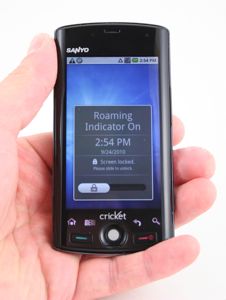
For the pre-paid, no-contract crowd, smartphones are few and far between. That's what makes the Sanyo Zio so appealing. It's an Android smartphone available from regional player Cricket. It runs Google's Android 1.6, however — an OS that's over a year old now. But beggars can't be choosers, right?
Body
I've come to expect a certain level of quality from Kyocera and Sanyo. To be honest, that bar isn't set very high. Thankfully, the Zio surmounts it, and is (mostly) a well-made handset. The fit and finish isn't as tight and refined as some of the recent Android handsets from Samsung or Motorola, but it feels great in the hand. All the edges are rounded and smooth, and the battery cover has a soft-touch finish that gives it just the right amount of grip. It might be a little bit thicker than most slate-style Android devices, but given the overall small footprint, that's a forgivable offense.
The front of the Zio is mostly the display, below which are the typical Android controls in the form of capacitive touch icons. The icons are completely flush with the surface of the Zio, and there's nothing to let you know that they are there aside from the lighted graphic. It takes practice to feel them out, but they were responsive enough that I didn't miss physical buttons. Physical Send and End keys are positioned directly below the capacitive controls, and both are easy to find and have good travel and feedback.
Sanyo opted to go with a trackball for navigation and fine-tuned cursor control on the Zio's screen. The Zio's trackball is easily the worst I have ever encountered. First, the ball was somewhat loose in the socket. Second, it was difficult to get the ball to move at all, in any direction. Third, when it did move, the cursor followed the ball's movements perhaps 10% of the time. It's so bad that I would suggest skipping the trackball altogether. It is possible that the trackball on our review unit is defective.
There are two hatches and a button on the left side of the Zio. The top-most hatch covers the 3.5mm headset jack. I'd call this superfluous. I understand the idea behind protecting the headset jack from dust, lint, and dirt, but I don't like to have a hatch bumping up against my headphone cord. Despite that complaint, the hatch itself works fine. The volume toggle is below the headset hatch. It has the same soft-touch finish that the back side of the Zio has, and this makes it easy to find against the smooth, glossy surface of the Zio's side. It has good travel and feedback. The hatch near the bottom of the Zio covers the microUSB port. This hatch also works well.
The right side of the Zio has a hatch covering the microSD card port and a dedicated camera button. I prefer to have access to the microSD card on the outside of the phone and not under the battery cover, so I appreciate the positioning on the Zio. The camera key is a two-stage button. It's a delicate key. The definition between the two stages is so slight that it's easy to miss. This button will take most users some practice to master.
Overall, the Zio is a decent handset. Were it not for the trackball, I'd even call it good. But the lower-than-average build quality might put some potential buyers off.
The Three S's
Screen
The Zio boasts a 3.5-inch LCD with 800 x 480 pixels. With the smaller physical size (than the Motorola Droid X or Samsung Captivate) and large pixel count, images, icons, and graphics all look sharp and clear. Picking out individual pixels and jagged edges was difficult. Text pops nicely, and even the smallest point-size font on web pages was legible, as long as you are indoors. The Zio's display looks great indoors. Outside, it performs on par with other touch phones. Cloudy days weren't too much of a problem, but sunlight made reading the display difficult. I was, however, at least able to interact with the main menu by angling the Zio properly.
Signal
In a standard Cricket coverage area, the Zio consistently connected to the network and held onto two bars. In the Newark, N.J., area, Cricket only provides 1xRTT service. The 1x network worked fine for voice calls. I was able to make calls without any problems. Text and picture messages came through fine, though sometimes there was a short delay.
Due to the lack of 3G in all the areas I tested the Zio, we are unable to equivocally state how well it performs under EVDO Rev. A conditions.
Cricket does not provide coverage in my area of New Jersey, so the Zio was roaming on different networks during the test period.
Sound
The few phone calls we were able to connect were of fairly poor quality. Again, without Cricket's own network providing coverage, it is hard to say if this is the phone's fault or the network's. Earpiece and speakerphone volume were both acceptable, but calls were fraught with static, noise, and echoes. Ringers and other alerts could be set to good levels, making the Zio easily heard from another room in a somewhat noisy household. Vibrate strength was good enough that most alerts will be noticed with the phone in your pocket.
Battery
Battery life of the Zio was about as good as most Android handsets. I was able to get more than a day out of it under most circumstances (despite the roaming). It's possible that sticking to 1x when roaming extended the Zio's battery life a bit. But with Wi-Fi on and my Gmail synced to the Zio, it still managed to get through an entire day (7AM - 11PM) with enough juice to make it to lunch the next day. I would expect most users will want to charge the Zio every night.
Touch
The Zio uses a capacitive LCD screen. It works just fine. I experienced no problems interacting with the display at all. It was able to perform multi-touch gestures without hesitation, and all the Zio's menus, applications, and systems loaded without delay. In other words, it behaved as it should.
Basics
Menus
The Zio runs stock Android 1.6. This is unfortunate. Most of today's top-end Android devices are launching with either Android 2.1 or 2.2. With Android 1.6 on board, the Zio lacks a number of features that make the Android platform a bit more robust, such as support for multiple Exchange accounts, Adobe Flash support, and some much-need improvements to the Android Market.
Stock Android 1.6 isn't terrible to work with, though.
Probably the thing I am disappointed about most is that the Zio has only three home screens to customize and not five or seven, as other Android handsets are offering. This means less space to put your own stuff.
When you first boot the device, you have to sign into your Google account. It will then automatically configure your Gmail, your Google contacts and other Google services. There is no hard syncing directly to a PC. It must be done via the internet.
You have a basic home screen that has a number of pre-loaded apps, plus a Google search bar at the top. Like any standard Android phone, there is a little tab at the very bottom of the screen. Swipe it up and the entire main menu will appear.
Tapping into the Settings menu, Android ditches icons in favor of a simple list of adjustments to make. Each has a pull-down arrow that opens up a folder with the choices for that menu selection. Most of these make sense and it's quick to figure everything out.
When using applications, hitting the Menu key on the front of the Zio will open up a short list of additional options you can use to adjust whatever app it is that you are running.
Lastly, there is a notification bar that runs along the top. Any time you get a new email or other notification, it will sit up there. From any screen on the phone, you can swipe down from that notification bar and it will show you any missed calls, and what unread messages you have.
In all, Android continues to be a highly usable mobile operating system.
Calls/Contacts
Calls
Tap the Dialer button on the Zio's home screen and a software keypad pops up. There are four tabs that run across the top: the dialer itself, the call log, your contacts, and your list of favorites. Each of these is exactly what you expect them to be.
The dialer buttons are nice and large and no problem for dialing numbers directly. The Zio provides haptic feedback when dialing. The call log shows all your calls heaped into one long list, and different colors next to each call tell you if it is a dialed, received, or missed call. Tapping any of the numbers opens a menu and gives you options for calling, SMSing, or adding the number to your contacts.
Once you are in a call, you can press the menu button to see a list of actions to take, such as swapping or merging calls, hanging up, placing the call on hold, and so on. You can also choose to send the call to a Bluetooth headset.
Going through the calling program once is all it takes to figure it all out.
Contacts
The Zio pulls in your entire contact list from your Google/Gmail account. Any changes made via the desktop version of Gmail are automatically synced to the Zio, which is a nice feature to have. The opposite is also true. Add a contact directly to the Zio, and it eventually appears in your Gmail contacts list.
It then lists everything alphabetically as you scroll down. It is easy to swipe your finger up and down to cycle through your contacts. There is also a nifty slider tool on the right side of the screen. As you drag your thumb down, it pops up. Shift your thumb over to the slider and you can zoom through the alphabet quickly.
Pressing a contact quickly will open the individual listing. Pressing and holding the contact name will give you a short list of options, such as calling or editing that contact's information. Each contact can store tons of information. You can also save them to your "Favorites", which effectively serves as a speed dial function on touch-based phones.
The Zio suffers from a lack of social networking integration, however. Other Android handsets add Facebook data to the contact app, for example, making for a richer experience. The Zio lacks any of that integration.
Messaging
The Zio comes with the typical Android fare, consisting of a messaging application, the native Gmail application, a third-party email application, and Google Talk for IM.
The messaging application is bare bones for a smartphone. It offers threaded conversations, and will place picture/video content in-line with text, but it isn't very pretty. It would have been nice for Sanyo or Cricket to dress this application up even a little bit.
The native Gmail application is as solid as ever, though the Android 1.6 OS prevents the Zio from downloading the new version of Gmail that Google made available this week. That's a disappointment. Still, Gmail on Android continues to be the best mobile experience with Gmail, as it supports most of the desktop features. If you really want to add some power to Gmail, use the browser-based version, which is actually richer than the on-board Gmail app.
The third-party email client allows you to access other POP3/IMAP4 accounts, but it doesn't support Microsoft Exchange.
Google Talk is the only IM client loaded onto the Zio. If you use AIM, Yahoo or Windows Live, you're going to have to look to the Android Market for third-party support.
Social Networking
The Zio comes with no social networking applications pre-loaded at all. That's an odd choice for Sanyo and Cricket to make. Even so, it isn't too troublesome for Zio users to go to the Android Market and find the social networking applications of their choice.
The native Facebook and Twitter applications work just fine on the Zio, though updates would only work for me via Wi-Fi. There are dozens of alternatives available if the native apps aren't your thing.
Sanyo and Cricket have made no effort to corral social networks into a single application as other manufacturers have, and that's a good thing in my opinion. As neat as those solutions are, such as Motorola's Motoblur and HTC's Sense UI, at collecting social networking feeds, they each have their own problems.
Sometimes sticking to the basics is what works best.
Extras
Music
Loading music is a snap. Attaching the Zio to your computer automatically puts it in mass storage mode and it shows up as a hard drive on your PC. You can drag and drop files directly into the Zio's Music folder and you're golden. You might alternately choose to download a third-party solution such as doubleTwist to manage media syncing.
The player itself offers pretty much the same features you get from any phone-based music player and makes no updates to the stock Android player. You can sort through music via artist, album, song, playlist, etc. Album art is displayed if it is tagged correctly, and the interface for playing music is simple and easy to use.
With a song playing, there are three software buttons on the screen next to the album art. They let you shuffle, repeat or view the current playlist. The menu button at the bottom lets you do a few more things, such as generate a "party shuffle", add the song to playlists, assign the current track as a ringtone or delete the track.
There is no way to alter or adjust the music with an equalizer, whether user-defined or preset. Music sounds pretty good with wired headphones and just "good" with stereo Bluetooth. It may not be the most robust player on the market, but it offers enough to make it worthwhile.
Camera
Camera
The Zio uses the stock Android camera software. It can be opened via a home screen short cut or the dedicated button. In my experience, using the on-screen software button was faster than the dedicated hardware button, but only by a smidge. Either way, you're looking at at least 3 seconds for the camera to prepare itself.
The viewfinder offers a zoom bar for adjusting zoom, a software shutter button, and a software sliding switch to flip between the still camera and video camera. Using the menu key opens up the full settings menu, and it's fairly extensive. Users can adjust resolution, quality, focus mode, effects, white balance and so on. Everything is set to "auto" by default. Once you've made your selections, press the back key or the camera key to get back to the viewfinder.
When you're ready to take a shot, press the camera button half-way to focus, and all the way down to snap the picture. As I mentioned earlier, the delicate sensibilities of the Zio's camera key means you'll have to practice a bit to keep from overriding the autofocus.
The camera takes about 1 second to focus, and then another second to snap the shot and bring up the preview screen. From the preview screen, images can be saved, deleted or sent to others via email or MMS. If you want to add a picture-sharing service, you'll have to do so through the Android Market.
Gallery
As for the gallery, you can jump there from the camera or the main menu. The gallery view consists of a grid of thumbnails. With a picture highlighted, you can use the menu button to get at a few options, but it's easier to press and hold, which opens up a larger menu for making changes to the picture.
Pictures can be cropped and rotated, but that's about it. No advanced editing functions here. You can easily add pictures to emails, create MMS messages, set images as wallpapers and so on. It would have been nice to see Sanyo and Cricket take some initiative and do something a little different with the gallery, but it's the same old Android gallery.
Photos/Video
Photos
The Zio has a 3.2 megapixel camera with autofocus, but no flash. I'd rate images about on par with other 3.2 megapixel cameras out there. White balance, color, and focus were all decent, but not impressive. Every so often some aspect of the exposure would be off, leading to blown out bright spots, or loss of detail in shadows. Some images were grainy, others were not.
One nice feature is that the Zio can be put into macro shooting mode. Not all handsets can do this. Macro mode allows for better focus of close-ups. This doesn't mean you're going to be able to capture the hairs on a bumblebee's butt, but you can get some decent detail from the inside of a flower.
Would I share these images? Yes, sure, via email and MMS. I probably wouldn't post them to Facecbook unless the subject demanded it.
Video
The maximum resolution video the Zio can capture is VGA (640 x 480.) Set to that resolution, video was OK. It's certainly no comparison to the 720p, HD-shooting competition. If you need to capture important family moments and the like, the Zio will certainly get the job done in a pinch, but you're going to wish you had a dedicated video camera, instead.
(video no longer available)
Browse/Customize
Browser
Android's default web browser is based on WebKit and can render full HTML web sites. The browser is very capable and looks fantastic on the Zio's screen. You can use your finger to navigate around screens, or (attempt to) use the trackball to zoom through them. You can perform basic browsing with the phone in portrait or landscape orientation.
A quick press of the menu key opens up a dock with most of the navigation items you'd expect. There is a full list of settings that let you customize how the browser operates (such as enabling / disabling JavaScript, managing passwords and privacy and more). The options are quite extensive.
I like that the browser lets you open multiple windows at a time. This lets you jump around between different web sites quickly. The browser also supports Google's MyLocation feature, which will help provide local results when you perform searches.
As far as browser performance is concerned, it worked great over Wi-Fi. Over the 1x network I was able to find, web sites loaded very slowly.
Customize
You can customize the Zio about as much as you can customize any phone. Wallpapers and ringtones are easily altered. You can rearrange all of the menu items, clutter up the home screen with icons and more. What you can't do is change the basic theme of the Zio, such as the color combinations of the menus and screens. This is one area where I think Android needs to start making strides. Either Google's coding engineers need to do it, or the device makers and network operators need to step it up and put some themes and color options on there.
There are pretty robust ways to manage the security of the device, control how applications are managed, how the microSD slot is managed, how data is synchronized, how location information is reported and on and on.
Extras
Apps
There are now enough applications in the Android Market for most anyone. Given the unaltered version of Android that's running on the Zio, the Android Market can be your salvation to making the device more personal and interesting to use. The Zio also has a link to a Kyocera-branded web site with 10 recommended applications, and a Cricket storefront for browsing and downloading apps. The Cricket storefront is mostly populated with Cricket-branded apps and services.
Bluetooth
The Zio has Bluetooth and supports stereo headphones. Pairing was a snap with any sort of headset. Sound quality was iffy, though. Sound quality through mono Bluetooth headsets for calls was near terrible. Music played back through stereo Bluetooth headphones was decent, but cut in and out enough to make it frustrating. The Zio has limited Bluetooth protocol support. I was able to successfully pair with a PC and swap files and a Bluetooth FTP client allowed for browsing the content of my PC, as well.
Clock
The Zio lock screen shows off a nice, large, digital clock with a press of any button. You can also download any number of clock applications from the Android Market to suit your tastes. The Zio makes for a fine watch replacement.
GPS
Google Maps is the only navigation option available on the Zio. Maps works fantastically well in the Android operating system — when the GPS works. My review unit had problems finding GPS satellites from time to time. Even when it did, it took a long time to locate the phone, and wasn't as accurate as other devices I've tested. It supports Latitude, the new location-sharing feature, as well. This lets you see where all your friends are on the map. The feature is opt-in, meaning users have to agree to use it.
With only a 1x connection available, maps loaded slowly, and the application wasn't quick to repsond to user input, but this will likely be a non-issue in areas with 3G coverage.
Wrap-up
The Sanyo Zio is probably the best phone available from Cricket. It would even be a fine Android handset if it were September 2009, but it's September 2010, and Android 2.2 handsets abound. The hardware is of middling quality. The screen looks great, however, and the the Zio is easy to hold and use.
The Zio's biggest problem is being ham-strung by Android 1.6. This operating system is over a year old, and has been left behind by new versions of Android. On top of that, Sanyo and Cricket have done nothing to customize the Zio in order to make up for some of the OS deficits. Instead, users are stuck with an out-of-date software experience and no special features to speak of.
Still, the Zio has some redeeming qualities. It offers a solid Gmail experience, good music playback, and an average camera. The Wi-Fi performance was good, and it has the venerable Android browser on board for the mobile web.
Calling performance wasn't bad, and battery life was actually pretty good.
Would I recommend this phone? For Cricket customers, there's not much else to recommend. Compared to most everything else in Cricket's line-up, the Zio is a sure-fire champ. For the cost-conscious, it's a decent budget buy.

Comments
Sanyo Zio on Sprint?
Does anyone know pricing or the version of android it will be running?
I'm sorry--
muchdrama said:
--but what is it with manufacturers releasing Android 1.6? It's a slap in the face to consumers.
That seems to be the nature of Android at the moment. Fragmentation issues. Hopefully 3.0 will resolve...
(continues)


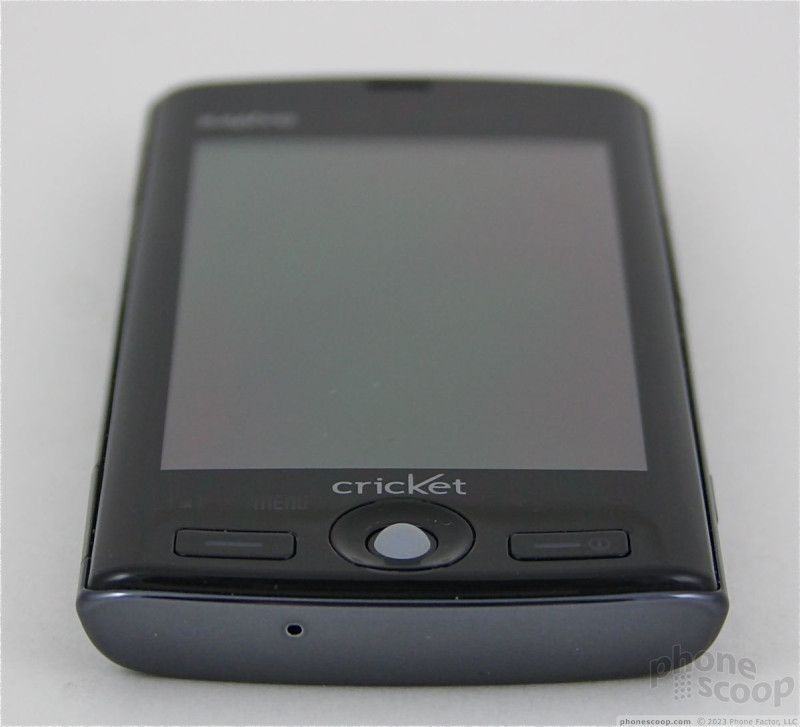








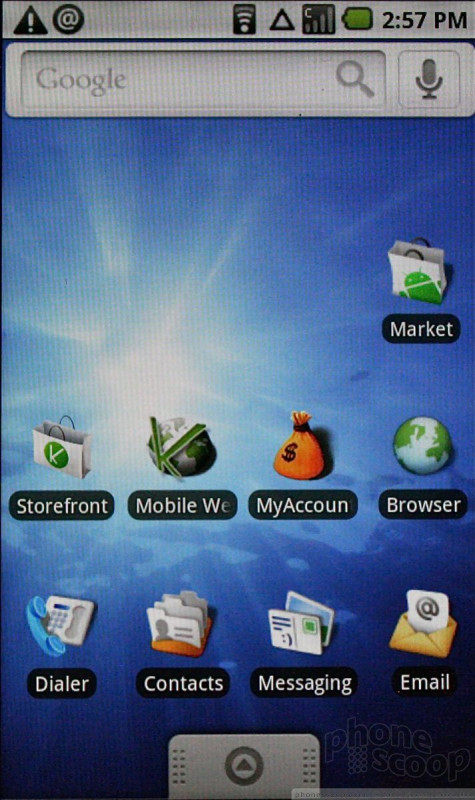




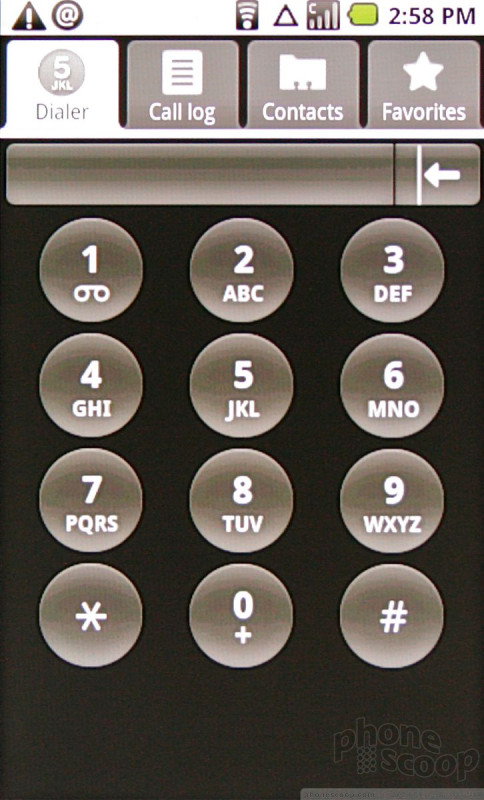



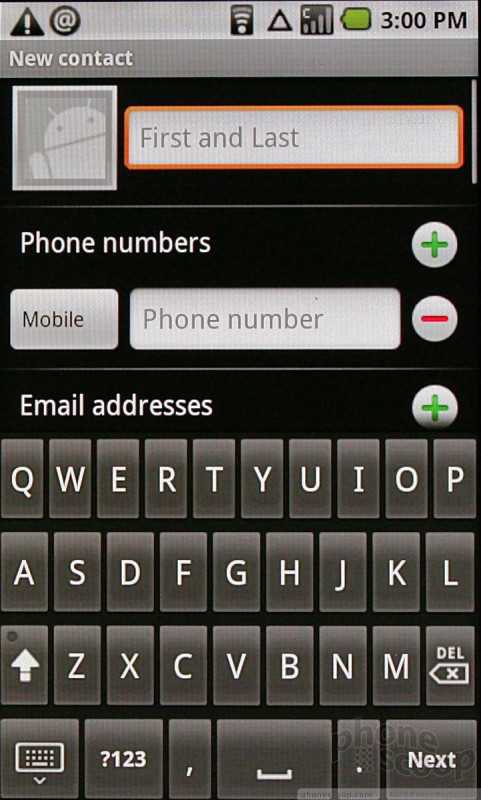


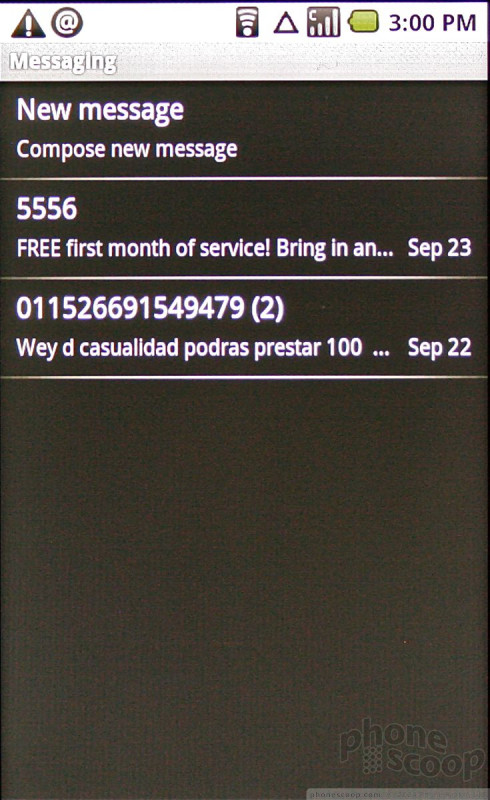








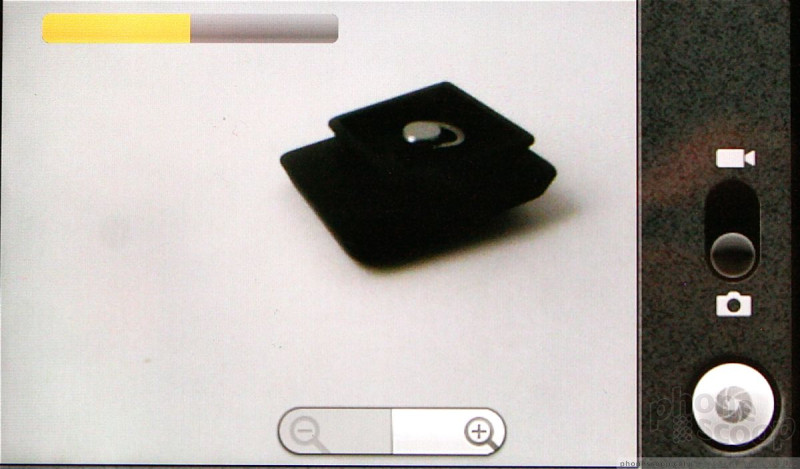



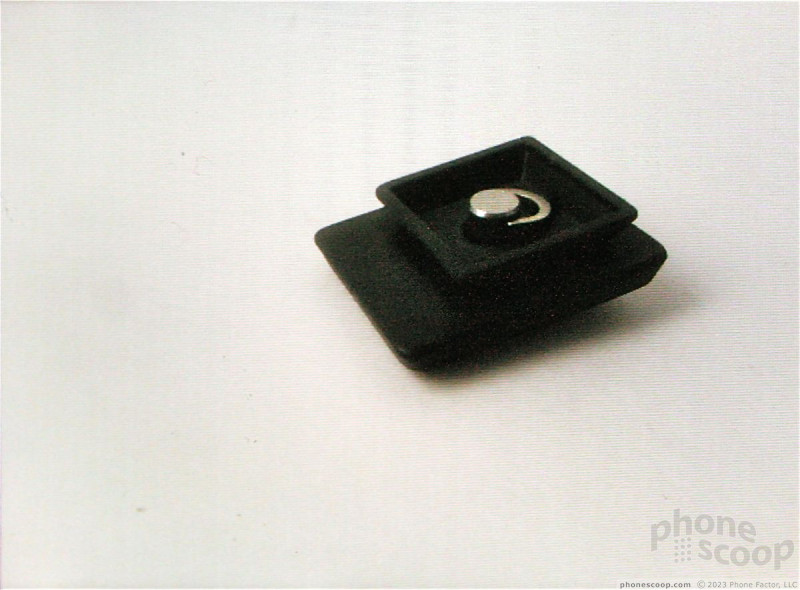



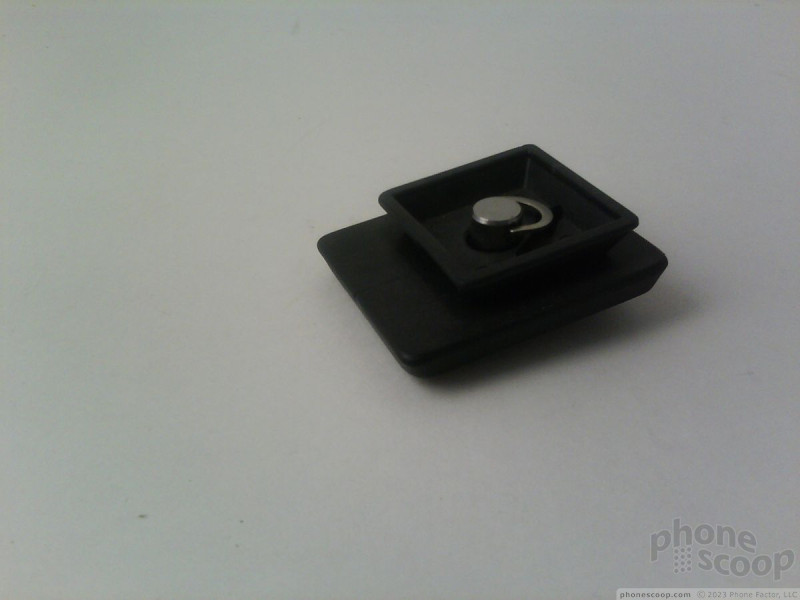















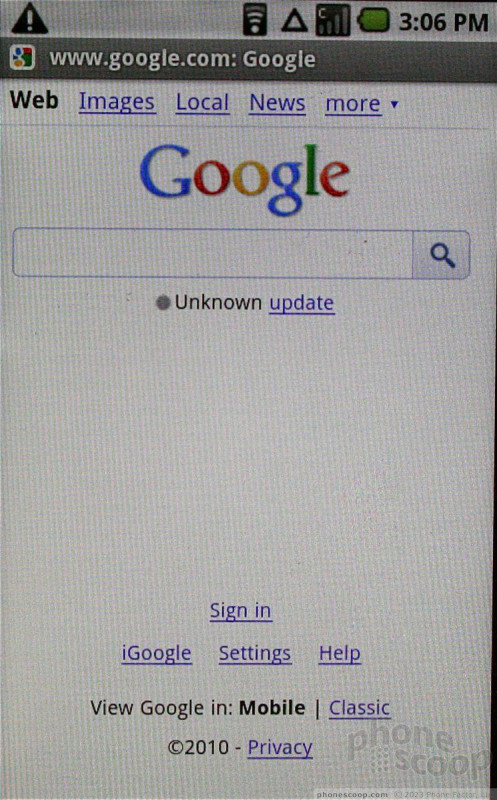




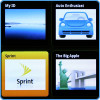 Video Tour: Sanyo Zio for Sprint
Video Tour: Sanyo Zio for Sprint
 CTIA Fall 2010
CTIA Fall 2010
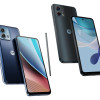 Motorola Updates its Most Affordable Phones
Motorola Updates its Most Affordable Phones
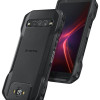 Kyocera Brings DuraForce Pro up to Date
Kyocera Brings DuraForce Pro up to Date
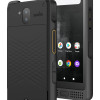 Verizon Continues Updating Rugged Lineup with Sonim XP10
Verizon Continues Updating Rugged Lineup with Sonim XP10
 Sanyo Zio by Kyocera
Sanyo Zio by Kyocera





